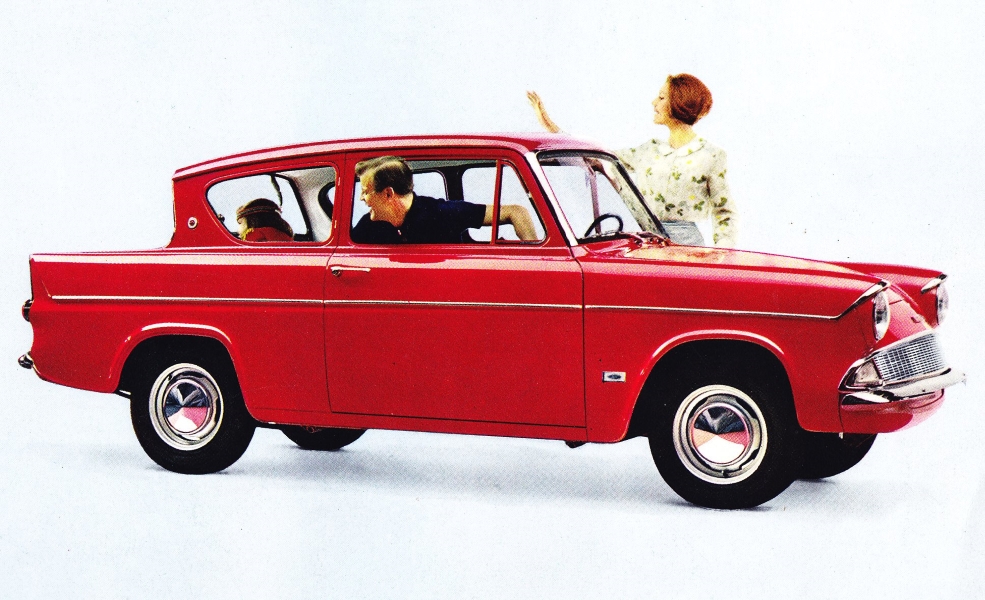Our choice of first car is often influenced by the makes and models we grow up with – although in Paul Guinness’s case, his future career plans also played a part.
Back then it all seemed perfectly normal. At the start of the ’Seventies, when I’d just joined the local primary school and my older brother was already halfway through his stint at a separate junior school, our mother would pile us into whichever down-at-heel Anglia 105E she was driving at the time and deliver us to our respective places of education. Every day we’d be dropped off and collected, along with as many as four other kids. Normal, eh?
It wasn’t that we were a big family. It’s just that my mother would think nothing of inviting her friends’ children to join us in the Anglia. The more the merrier, in fact. All she had to do was pile them in and drop them off at school, conveniently ignoring the fact that the Anglia was only really a four-seater. If I was lucky enough to blag the front passenger seat, I’d usually be sharing it with another child of similar age, while as many as four others would be squeezed on to the back seat.
With my mother’s Anglias generally being early examples, none came with the luxury of seat belts. Fear not, however, because she employed her own bespoke safety system that went something like this. Every time she braked, her left hand would leave the steering wheel and her arm would stretch out, providing me and my fellow front seat passenger with a foolproof way of staying alive. Ah yes, in the event of an emergency there was nothing more effective than an outstretched parental arm to prevent a pair of five-year-olds from hurtling at high speed into the unforgivingly hard dashboard of a Ford Anglia.
Against all odds, however, we survived. There were, of course, far fewer cars on the roads back then, which statistically reduced the chances of being involved in an accident. On the other hand, the dire state of my mother’s cars throughout my early years meant that even the slightest knock would almost certainly have meant disintegration of the Ford in question.

Those cars were seriously rotten. Her final Anglia was a 1959 example that my father had bought from a friend of my grandfather’s who’d owned it from new. It had been treasured by its sole previous owner, yet was still a virtual wreck. Patched up underneath and with bodywork that was as holed as the finest wedge of gruyere, it was as rough as any vaguely roadworthy Anglia could be. And as the holes grew ever larger, they simply got covered up with grey tape, providing an interesting contrast to the otherwise maroon-coloured front wings.
And yet … and yet I loved those cars. Throughout my early schooldays I was somehow blind to their poor state and the fact that my mother was always the final owner before each one was hauled away for scrap. To me they were style itself; their super-sharp tail fins, their brown-stained chrome bumpers and their wide-grinned ‘mouths’ were a work of art to my five-year-old eyes. And inside the good news continued, with a metal dashboard that featured proper picked-out-in-white writing for the heater controls and a bonnet pull marked ‘Hood’ (how very American).
It must have made quite an impression on me, because when the time came for me to choose my own first car in 1981 (the year before I turned 17, which meant I had time to work on it and get to know it before attaching ‘L’ plates the following March), it had to be an Anglia. There was simply nothing else I’d consider. And so I was delighted when a 1960 example came up for sale, a one-owner car with 52,000 miles on its odometer and bodywork that was dramatically better than most other examples of the time.
There was, however, another reason why – at the age of 16 – I was adamant about having an Anglia. You see, ever since my early teens I’d had just one ambition in terms of my future career, and that was to be a motoring journalist. It’s all I was interested in becoming, and I was already sending off features to magazines in the hope of having them published. But I also figured that starting and running an owners’ club would give me a good basis in magazines as well as plenty of contacts – and at the turn of the ’Eighties, there was no such organisation for the Anglia 105E.
With my own Anglia bought in 1981, I write off to various classic car magazines announcing my intention to start a club for the humble 105E, and was encouraged by the response. I joined forces with another enthusiast and the Ford Anglia 105E Owners’ Club was officially founded in November of that year – and is, it seems, still going strong. I’m no longer involved with the Anglia scene or the club, but it’s good to know that something I was instrumental in creating 37 years ago is still flourishing.




